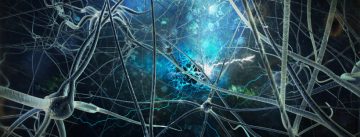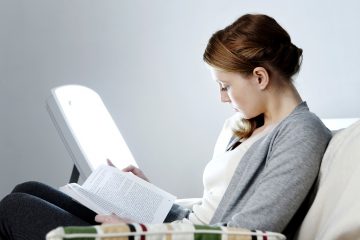
November 2019
www.ninet.med.ubc.ca
PDF version of the newsletter can be found here
Autumn comes to Vancouver! This is our 6th newsletter from the NINET Public Advisory Committee (PAC), comprised of members of the public, clinic patients, lab personnel and Dr. Fidel Vila-Rodriguez. We focus on improvements at the clinic, on-going research, and how to improve access to and education about non-invasive neurostimulation therapies for people with mental illness. If you have questions, contact us at newsletter.ninetlab@gmail.com.
NEW STUDY: BIPOLAR DISORDER

Dr. Fidel Vila-Rodriguez recently spoke about new research for people with bipolar disorder at the Vancouver Coastal Health Research Institute. Here are the highlights:
Dr. Vila-Rodriguez is leading the Vancouver arm of a clinical trial investigating magnetic seizure therapy (MST) to treat bipolar depression. The study—which is also recruiting patients in Toronto and London, Ontario—will compare the effectiveness and side effects of MST with the current electroconvulsive therapy (ECT) approach.
Results from the first randomized, double-blind study of its kind could lead to changes in how very severe cases of bipolar depression are treated. “People who come to us have symptoms so severe that they are not able to enjoy their life, work or relationships,” says Dr. Fidel Vila-Rodriguez. “When we see patients, they have invariably already tried other treatments for their bipolar depression, such as psychotherapy and medications.” In use since 1938, ECT is one of the most effective therapies to put treatment-resistant depression into remission, with a reported 65 to 75 per cent success rate. However, a 2003 study in the British Medical Journal found that at least 1/3 of patients who underwent ECT reported persistent memory loss, which deters some patients from pursuing this treatment. While both ECT and MST induce minor seizures in the brain, patients are placed under general anesthesia to prevent body convulsions. Patients’ heart rate, level of blood oxygenation and blood pressure are all monitored during treatment. Unlike ECT, MST uses magnetic currents, not direct electricity.
The seizures release neurotransmitters, such as adrenaline, dopamine and GABA—an inhibitory transmitter that stops the seizure. This process triggers neurogenesis, which produces new neurons in the brain. “If this research shows that MST and ECT are similarly effective, but MST has fewer side effects, MST may quickly replace ECT as the preferred treatment.” ECT and MST are part of a treatment mix for bipolar depression that includes psychotherapy and medication. Given its potential fewer side effects, MST could offer patients concerned about potential memory loss greater peace of mind. “For some patients, this type of therapy is like flipping a switch,” says Vila-Rodriguez. “After a few sessions, their enjoyment of life, as well as their productivity, returns.” – excerpted from article by Vivian Sum.
NEW FACES IN THE CLINIC
We welcomed some new faces in the NINET Clinic recently. Hallee S, Kathryn D and Judy C are each behavioral neuroscience co-op students working on the NINET Lab research studies. Ask Hallee about hiking (and where she likes to hang her hammock) and Kathryn about her photography. Judy has a passion for badminton when she is not at UBC. Meghan C joins the lab as a biology co-op student; she may be persuaded to sing a bar or two if you ask nicely. Ria H is joining us in the NINET Office as well. Welcome, all!
SUPPORT RTMS & MSP COVERAGE
Call for public support! The provincial Health Technology Assessment Committee (HTAC) is reviewing whether rTMS should be considered an approved technology for public health funding purposes. If rTMS has helped you or a loved one, please consider sharing your story in the HTAC review process. They are at HTR.Office@gov.bc.ca
JOURNALING & MENTAL HEALTH
![]() Journaling can be a form of self-therapy. If we do it correctly, writing out the events and moods of our days is much like seeing a counsellor. Both serve to unravel the tangled mess we call our brains, and hopefully organize its cluttered souvenirs into something that resembles clarity. The act of writing allows the time and space to think ideas (and feelings) through to the end. And it requires sustained thought, which acts as a filter for the small, flickering thoughts that threaten to sweep us off topic.
Journaling can be a form of self-therapy. If we do it correctly, writing out the events and moods of our days is much like seeing a counsellor. Both serve to unravel the tangled mess we call our brains, and hopefully organize its cluttered souvenirs into something that resembles clarity. The act of writing allows the time and space to think ideas (and feelings) through to the end. And it requires sustained thought, which acts as a filter for the small, flickering thoughts that threaten to sweep us off topic.
Importantly, written words are as permanent as we want them to be. Unlike spoken thoughts, we are able to look back at our old works and relive the memories and personalities we’ve shed, like trying on old clothes only to realize the cuffs are too short; we have outgrown them.
According to the University of Rochester Medical Center’s Health Encyclopedia, regular journaling helps manage anxiety, reduce stress and cope with depression. They go on to write how journaling “helps control your symptoms and improve your mood” by allowing us to prioritize our problems, fears and concerns; track day-to-day symptoms and identify potential triggers; and provide an opportunity for positive self-talk while “identifying negative thoughts and behaviours.”
The benefits rely a good deal on the content of our writing. It’s paramount we focus not only on the emotions surrounding an experience, but also on the ways we process and learn from that experience. In his excellent article for Psychology Today, Dr. Steven Stosny wrote that improper journaling can result in us: living too much in our heads, being reduced to a passive passenger in our lives, making us self-obsessed or allowing us to wallow in negativity. Through this, a journal may become a “vehicle of blame instead of solutions” – falling to the dark side.
To prevent this from happening, Dr. Stosny suggests a method of interpreting our emotions and our response to these emotions. First, write on a “problem or negative feeling that you believe need expressing.” Then look objectively at what you wrote: would a comfortable person feel the same way? Examine the problem in the context of your deepest values. Finally, think of how you can grow and benefit from the experience. The objective is not to ruminate (though it will be tempting), but to actively seek improvement or solutions to the issue.
Another good resource on journaling for mental health is the book, Writing as a Way of Healing, by James Pennebaker. In the end, journaling is what you make of it. There is no formula or structure, you are the master of your pen. Write what makes you happy, write down your worries and woes. Write your greatest joys and most sorrowful defeats. Write it all down, and if you get lost, write until you are found. – Kevin Jiang, excerpted from his post on the NINET blog.
If you want to try journaling yourself, check out Bullet Journaling (www.bulletjournal.com) for how to create a practical, personal journal. If you search Instagram or Pinterest, you’ll find many different ways to bullet journal. Many people use bullet journaling to track mood, selfcare, sleep and other activities that support both physical and mental health. More information is found here.
MORE CURRENT RESEARCH
The NINET Lab continues its research on treatment-resistant depression with the ASCERTAIN-TRD study. The purpose of the study is to compare the effectiveness of three different treatment options for those dealing with treatment-resistant depression. The three different treatment options are: (1) adding aripiprazole (Abilify™) to current treatment, (2) adding repetitive transcranial magnetic stimulation (rTMS) to current treatment, and (3) switching current treatment to Venlafaxine (Effexor™).
ASK AN EXPERT: LIGHT THERAPY?

Woman
As the winter draws close and the daylight gets shorter, we asked Dr. Vila-Rodriguez to comment on the use of light therapy for depression generally as well as for seasonal depression.
Light therapy uses exposure to bright artificial light to treat depression, especially seasonal affective disorder (SAD). SAD is a type of depression that occurs usually in the fall or winter, and is related to shorter days and reduced sunlight exposure. Some people with major depressive disorder also observe seasonal patterns to their symptoms. Light therapy can help with depression symptoms and certain sleep disorders as it resets your body internal clock.
How does it work? Light therapy is thought to affect brain chemicals linked to mood and sleep, easing depression symptoms. Using a light therapy box may help with sleep disorders and other conditions. For some people with bipolar disorder, light therapy may trigger mania so seek medical advice on whether light therapy is suitable in your circumstances.
During light therapy, you sit or work near a device called a light therapy box for thirty minutes at the same time every day, ideally in the morning. The box gives off bright light that mimics natural outdoor light. The intensity of the light box is recorded in lux, a measure of the amount of light you receive. For depression, the usual recommendation is to use a 10,000lux light box at a distance of about 16 to 24 inches (40 to 60 centimeters) from your face.
10,000 lux is more than 20 times brighter than most indoor light! You cannot get the same effect merely by exposing your eyes or your skin to the winter sun or ordinary indoor lights.
To be effective, light from the light box must enter your eyes indirectly. You can set your light box on a table or desk in your home or office. That way you can read, use a computer, write, watch TV, talk on the phone or eat while having light therapy. It usually takes three to four weeks of consistent daily use before you can evaluate whether light therapy is helpful to you.
The clinical research shows that while light therapy probably will not cure depression, it may ease symptoms and increase energy levels. It can be a good winter adjunct to existing treatment, including rTMS, medication, cognitive behavioural therapy and self-care.
Questions? Ask at a Group Medical Visit! You can also read our past columns on sleep, mindfulness, different rTMS protocols and depression relapse in our newsletter archive.